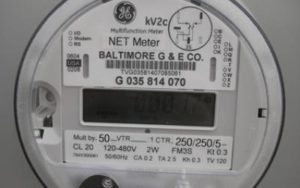AEP seeks rate increase to protect its monopoly

American Electric Power (AEP), the utility for a large section of Ohio, has asked the Public Utilities Commission of Ohio (PUCO) for permission to raise fixed charges on its customers. Fixed charges are determined by the utility to be what its customers pay for the non-electricity portion of their bill. In other words, keeping the lights off, or going solar, won’t help you lower these charges.
This proposed increase is a direct threat to Ohio’s growing solar and energy efficiency markets. AEP is looking to make these options less valuable to consumers by decreasing the amount they can save on their electric bill by using less electricity. The utility currently charges $8.40 per month in fixed charges. It has asked the PUCO to increase the charge to $18.40. AEP got approval for the $8.40 fixed charge in 2011. Before that, the charge was $4.52.
AEP’s ask for higher fixed charges is particularly galling in light of the many benefits provided to all customers from distributed energy sources such as solar. Solar panels produce electricity during the day. At the same time, higher electricity demand forces utilities to meet energy needs with more expensively produced electricity. This demand raises electricity prices for everyone. The addition of solar to the grid helps lower everyone’s cost of electricity by lowering demand from solar users, and also adding electric capacity to meet non-solar users’ needs. Solar customers can generate excess electricity that can be used by their neighbors.
Solar generation produces electricity at or near the site of demand. Solar does not require the investment in transmission or distribution lines that electricity from large, centrally-located plants do. Producing electricity closer to demand is also more efficient. It is estimated that roughly 6% of electricity produced in this country is lost due to transmission.
AEP must present its case before the Public Utility Commission of Ohio. The Commission has not yet set a schedule for when it will hear testimony and public comment. To keep up to date on this, and other solar policy developments in Ohio, sign up for our listserv and monthly newsletter.
